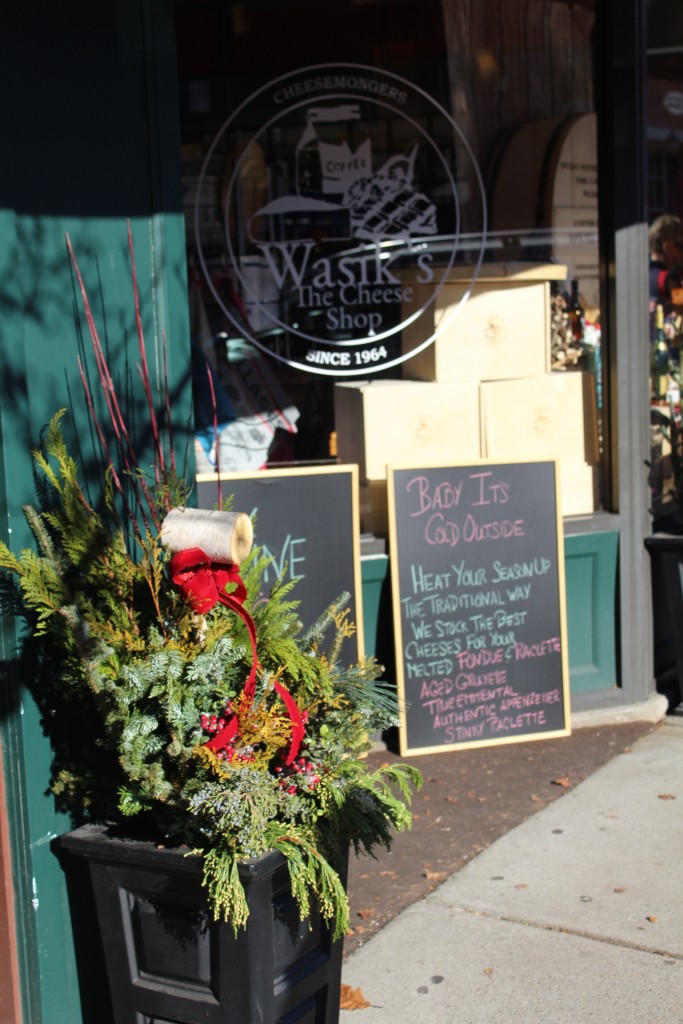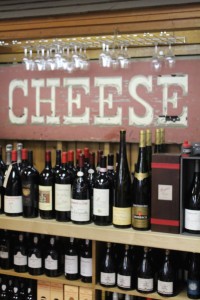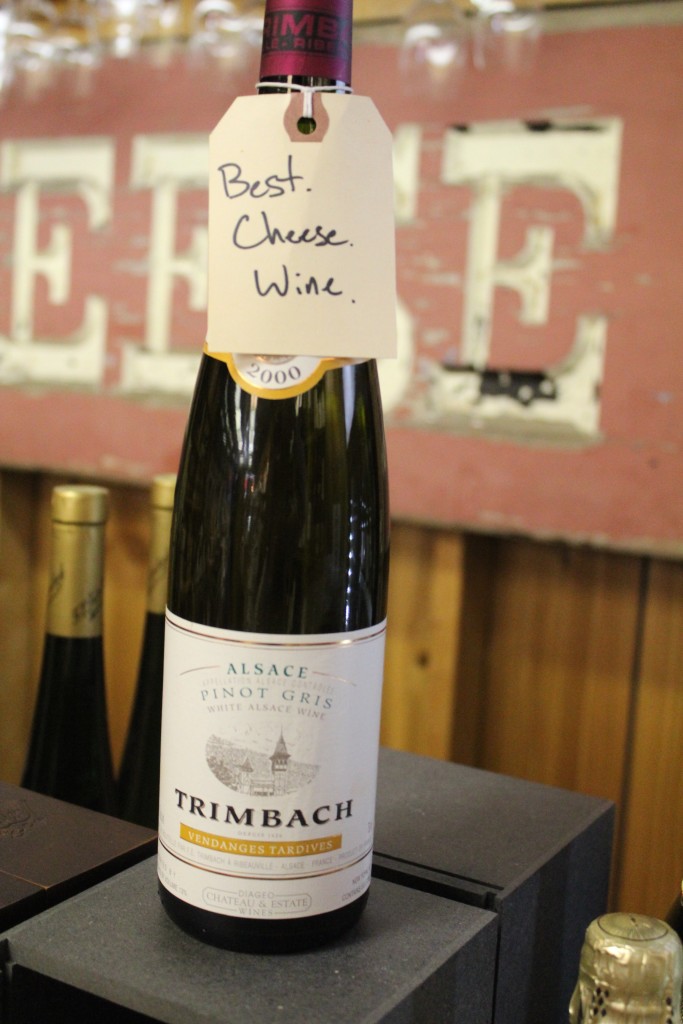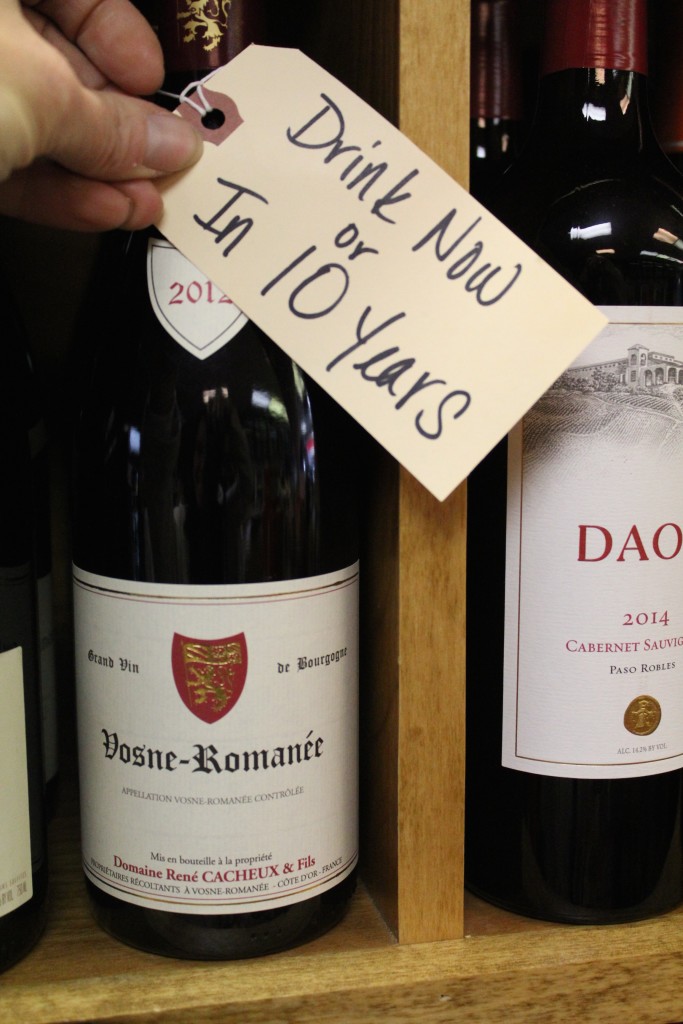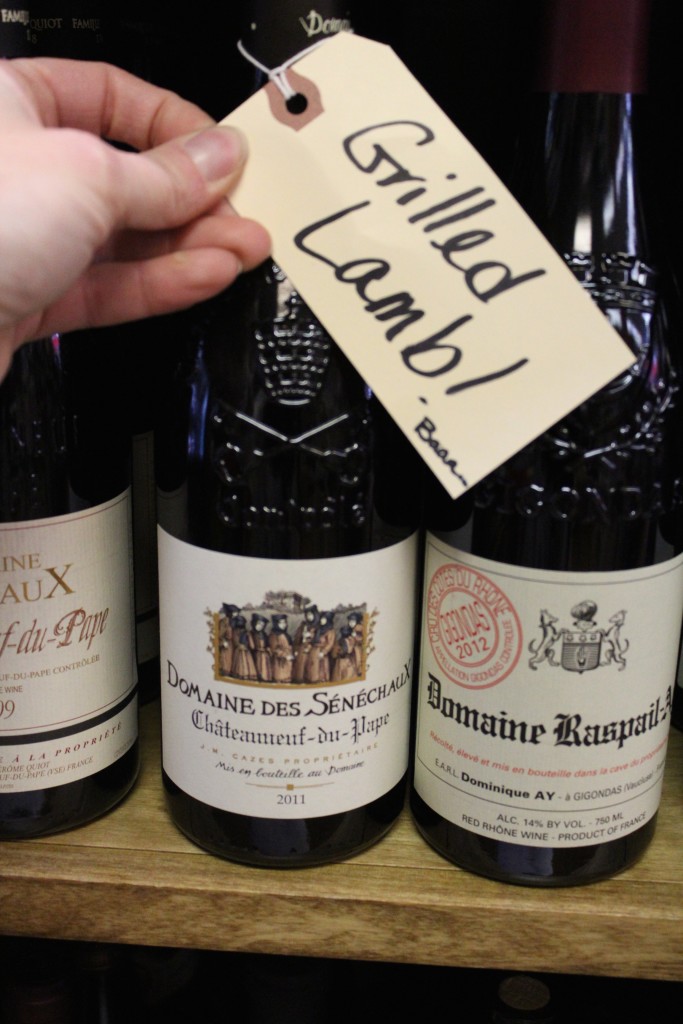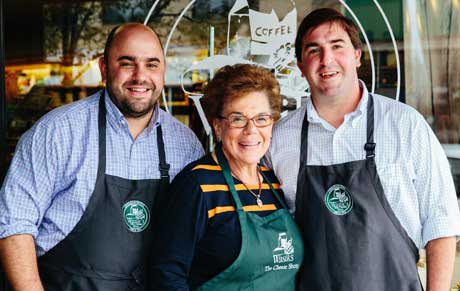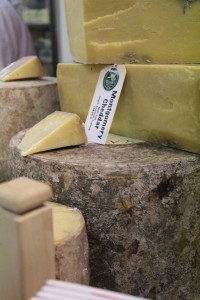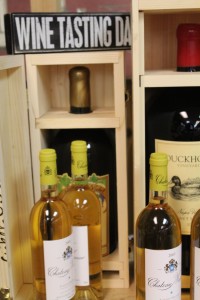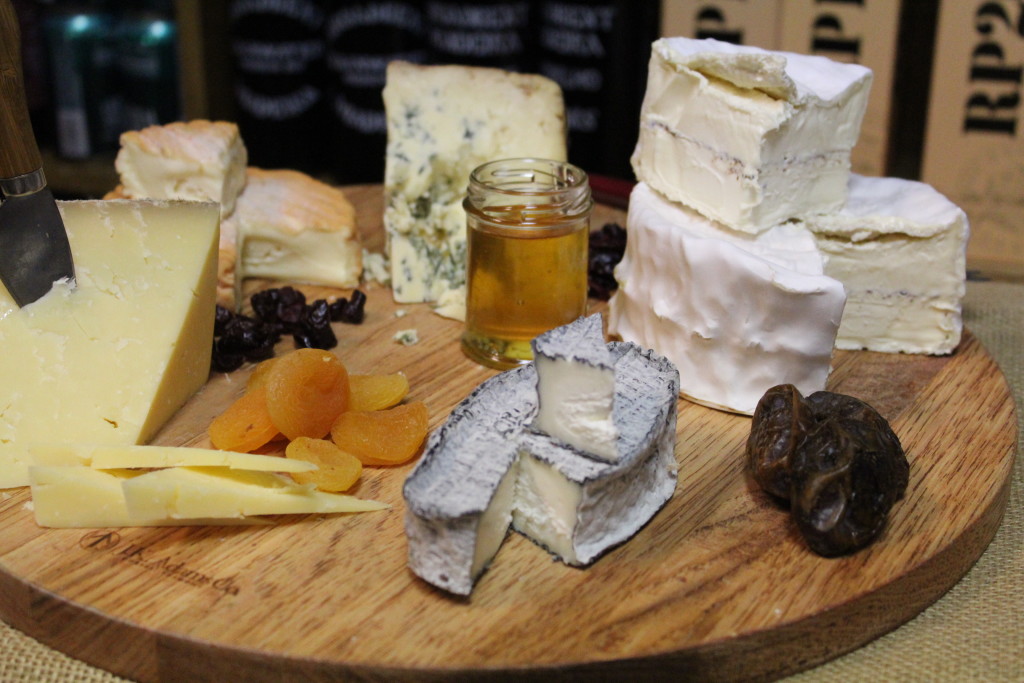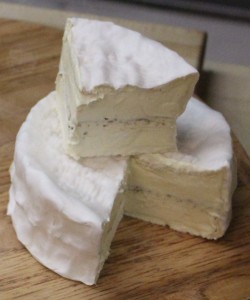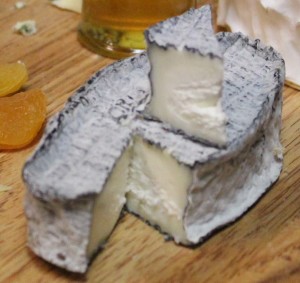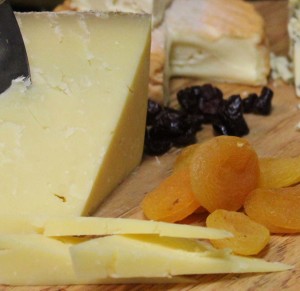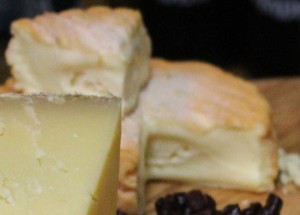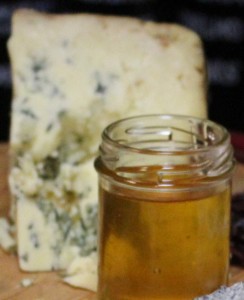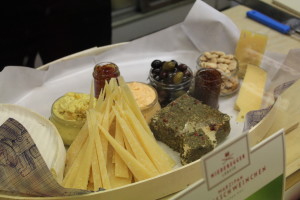A Guide To Cheese With Wasik’s Cheeseshop
We adore cheese. In fact, we love cheese so much we’d run away with it and marry it if we could. Who cares if it can get a little stinky? You can run into the same problem with men. Just kidding gentlemen!
Anyhow, we’re pretty sure most of the human population who has taste buds would agree with us about this love affair. That’s why when Brad Wasik of Wasik’s Cheese Shop in Wellesley agreed to give us a lesson on cheese, we got so excited we high-fived each other and did a little cheese jig.
Opened in 1979 by the late Steve Wasik and his wonderful wife Carol, Wasik’s has become an institution within the Wellesley community and a mecca for cheese lovers. At the very first step into the shop, there isn’t any doubt why Wasik’s is so beloved. The place radiates a warm feeling; more like you’ve entered someone’s home than a store. The staff bustles behind the counter, attending to both familiar and new customers with the same genuine care and enthusiasm. The Wasik crew is eager to share their latest arrivals, just like a cook excited to have someone taste his/her latest dish. And the banter between staff and customers milling around the store is adorable. We were instantly in love!
Besides literally hundreds of cheese varieties, the shop has an extensive charcuterie menu, fresh pasta, specialty crackers, oils, vinegar, and of course wine! The vino is fairly new. Since prohibition, Wellesley was a dry town until about a year and a half ago, when a few stores were permitted to obtain liquor licenses. And since cheese and wine are an epic couple who rival Cleopatra and Anthony, the wine selection was a much-welcomed addition to the shop!
We loved the clever little tags peppered throughout the wine bottles suggesting with what each wine would pair best.
Once deep inside the lively shop, we were greeted with a kind smile by the matriarch, Carol Wasik. Carol operates the store with her two sons, Brian and Brad.
Brian, Carol, and Brad Wasik
Brad was tasked with giving us our “Cheeseboard 101” lesson. And wow, did he prove himself to be a master on the subject!
So, courtesy of Brad Wasik, here are your instructions on how to construct the perfect cheese plate, with some interesting facts mingled into the lesson.
CHOOSING THE CHEESE
A balanced cheese plate should have three to five different cheeses, all of different milk and varieties. The main players are sheep, cow, and goat, and the varieties depend on the recipe. If you want to let your inner cheese geek loose, you could do a theme. For example, serve cheeses all from the same region, like burgundy and then pair with wines from the Burgundy region. If you’re a true foodie and really want to get crazy, you could do a side-by-side comparison plate and serve two different versions of four different types of cheese. Yowza!
When buying your cheese, think of it as a living breathing thing. There is a window of ripeness. Just like the summer tomato hanging on the sunny vine, you can pluck it any time it turns red. But, there’s that window of plump ripeness when you’ll be in tomato heaven. So, hauties, be sure to squeeze your cheese!
Or, better yet, ask your cheese person what cheese is the best out of the current stock, i.e., what’s the ripest/aged. It’s like going to the produce section, you might get fiddleheads in April and shun the apples in February; some cheeses are just better during a given season. We all know about the holiday tradition of Stilton and port. But, did you know it’s because Stilton is made in the spring and ages about nine months? So, that’s why it’s become a traditional cheese for this time of year.
Wasik’s receives several deliveries a week. Brian and Brad personally inspect each lot of cheese, rejecting the ones that don’t make “the cut,” and sending any that are still maturing into their temperature and humidity-controlled cheese cellar until they are ready for their grand debut!
Fun Fact: soft cheeses ripen, hard cheeses age.
WHEN TO SERVE THE CHEESE
Cheese can be the opener or the closer for your event. Either before with cocktails, or European Style as a desert and a delicious way to extend the evening while enjoying more wine! If serving as a desert, add a nice baguette to the platter. Crackers are preferred for cocktail hour.
Because we’re in the holiday season, we’re focusing on the appetizer cheese plate. As you’re running around straightening throw pillows and preparing the main dish, a cheese plate is quick and easy and generally a crowd pleaser. So, with little prep time, it is perfect for this busy time of year.
HOW TO SERVE THE CHEESE
Cheese is at its best at room temperature. So, if you can plan and resist the temptation to pre-nosh, this means leaving it out for one to two hours in advance of your guests’ arrival. As a side note, cheese is much more durable than expected. If you’ve had a little too much fun, and need your bed immediately after your guests’ departure, don’t worry about the cheese! The next morning, just wrap it up in plastic and stick it in the fridge. Unless, it’s been exposed to extreme temperatures, it should be fine. As Brad told us, his father Steve always used to say, “Cheese was god’s way of saving milk.”
When presenting the cheese, keep each wedge whole, and just get a few slices started. For blue cheeses, “chip” a few pieces out of the front. Besides crackers, dried fruits or even fresh produce are another great vehicle for your cheese. While there are endless chutneys and spreads, Brad tells us the old standby is honey. It’s readily accessible in most of our cabinets and will go with just about any cheese.
So, what wines should you pair with your cheese extravaganza? While a specific cheese may have a perfect wine match, Champagne is the navy blazer of cocktails; it goes with everything! (We can’t take credit for that great line, Thanks Brad for the fantastic metaphor!) When in doubt and especially with a mixed cheese plate, you can’t go wrong with sparkling wine. You may want to add chardonnay and pinot noir to the options as well, as they are fairly versatile.
We realize that once the wine is flowing and appetites are whet this rule will go out the window. But, you should recommend guests start with the milder and creamy cheeses and move toward the stronger. This allows our palates to taste and appreciate each cheese and then acclimate to the next. Using little cheese board labels can help guide your guests’ through the cheese tour.
WHAT TYPES OF CHEESE
There are 8 different kinds of cheese. For our cheese plate, Brad chose the types listed in bold. He said one really wouldn’t add a fresh cheese to your presentation unless it was the spring or summer. For that, think of your typical caprese. Although, Brad had some fantastic ideas about Stracciatella di Bufala (the stuffing in burrata cheese), pesto, and crusty bread. Yum! We may put on some heat lamps and Jack Johnson just to pretend it’s July and enjoy this dish.
- Fresh cheese
- Soft ripening w/bloomy rind
- Soft ripening w/washed rind
- Tilsit style
- Hard pressed curd style
- Chevre
- Blue-veined cheeses
- Spiced cheeses
So, here it is! Our custom-made holiday cheese board!
Brad chose these particular cheeses, because they followed the rule of showcasing different varieties and different milks. Feel free to duplicate! We highly recommend them all. But, keep in mind, when you head into Wasik’s, or your favorite cheese shop, ask what is best at that time. Here we move from mild to stronger, as advised earlier.
TYPE: Soft Ripening with a Bloomy Rind
RECIPE/REGION: Triple Creme from Champagne
NAME: Brillat Savarin with Black Truffle
Generally, cheese makers do not add things to good cheese. But, there’s always an exception to the rule. In the case of this gorgeous triple crème, a layer of truffle cream glues together two buttery halves. If you only try one cheese, this is the one. Mmmm, we’re starting to drool just thinking about it.
A bloomy rind cheese is made by pressing the cheese into a mold. As it ages, a skin develops (think of the film that forms on warm milk). Eventually, spores floating around in the air connect with skin and start to bloom, giving life to the soft and tasty rind.
TYPE: Chevre
RECIPE/REGION: Goat with Charred Vegetable Ash from Loire Valley
NAME: Delice du Poitou
If you’re a cheese nerd, like us, then you should be familiar with the grey, ash covered goat cheeses in most cheese shops. But, did you know the origins of the ash covered chevre was actually used to label the goat cheese created in the Berry region of France? About 400 years ago, Berry was known for its chevre. So, by dusting the cheese with ash, people at the market would know which cheese was the best.
TYPE: Hard-Pressed Curd Style
RECIPE/REGION: English Farmhouse Cheddar Style from Montana
NAME: Missouri Truckle
Cheddar cheese comes in two different styles, English Farmhouse, and North American. The difference being that the English Farmhouse is wrapped in cloth and North American in plastic. This means all the difference in the aging process and the flavor that comes with a fine aged cheddar. We’re going to assume that everyone has tried an aged cheddar or Gouda at least once. Do you recall those salty and nutty little pieces of cheese that roll onto your tongue bursting with flavor? Well, that cheesy goodness is only possible with an English Farmhouse and the magic happens because of the cloth.
The cloth allows the cheese to breathe and moisture to escape. Just like when reducing a sauce, the moisture evaporates and flavor condenses. During this aging process, 20 pounds of cheese can literally become 15. So, that explains why the longer a hard-pressed cheese is aged, the more bite and flavor it has. And also, generally, more expensive, as it was originally a larger quantity of cheese.
TYPE: Soft-Ripening with a Washed Rind
RECIPE/REGION: Cow’s Milk Bathed in Chablis from Burgundy (NOTE: Chablis is just chardonnay from a different region)
NAME: Affidelice
A washed rind cheese starts out as a soft blooming rind. But, instead of letting it ripe all by its lonesome self, the cheese maker occasionally baths or washes the cheese in a liquid. Now, this liquid can be salt water, wine, beer, or hard liquor. Frequently, they use a regional wine or liquor. Occasionally, it’s a way for the cheese maker to cover up a naughty bloomy rind that didn’t quite behave as expected. Regardless of the reason, the wash adds more character and flavor to the cheese.
TYPE: Blue-veined cheeses
RECIPE/REGION: Cow’s milk from Nottinghamshire
NAME: English Farmhouse Stilton
Now that we’ve moved up the flavor profile scale, our taste buds are ready for a nice creamy, yet strong, cheese. Many people are afraid of blue cheese; the bitter immature chunks found in a salad buffet often come to mind. But, when served in the right season, such as Stilton from November to December, you will discover a multitude of refined tastes all in one bite. From creamy to salty, to a hint of sweetness. We loved this cheese!
We’d love it even more with a glass of port, a fire, holiday decorations, and some heart-warming carols playing in the background. We hope you will all find the opportunity to slow down for an evening, grab a nice stilton and port, and enjoy what cheesemakers back in the spring had in mind for us this time of year!
A big thanks to Carol, Brad, and Brian for welcoming us into their shop during their busy season. (Although, we imagine it is always so lively!) We are so grateful for their time and generosity. We are officially lifelong fans of Wasik’s Cheese Shop!
We highly recommend you stop in for a visit. Better yet, they put together some of the most amazing cheese and charcuterie plates we’ve seen. Consider ordering one for your next party or corporate event! If you’re craving more cheese knowledge, you can also hire the Wasik’s Team to give an in-home lesson. We think this sounds like a fantastic night and an even better holiday gift.
A hard-pressed cheese, Wasik’s famous herbed chutney curry, pimento spread, marcona almonds, Mediterranean olives, Michigan cherries, fancy pears, dates & figs
Cheers and Cheese!
Love,
Jessica and Kimberly
Address: 61 Central St, Wellesley, MA 02482
Phone:(781) 237-0916


